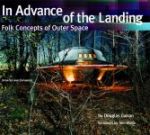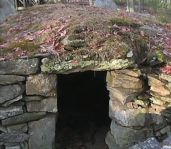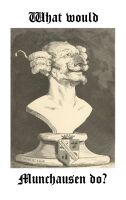|
by Douglas Curran  A wondrous, kind-hearted compendium of modern seekers
A wondrous, kind-hearted compendium of modern seekers
In 1983, as my wife Fayaway and I were travelling through Patagonia, I met a man with a penetrating but pleasant gaze, and an inviting grin, in a small village in the middle of the pampas. We shared a table and conversation for an afternoon, discussing a variety of subjects of common interests. I was myself in Argentina on business about which I was rather reticent to speak: my wife and I were travelling to Lago Lacar in the Andes foothills, following reports of a plesiosaur-like creature, which I then believed (and believe still) to be a gigantic species of the long-necked protozoan Trachelophyllum (Kudo, 1966). I was, however, rather shy about admitting to holding such seemingly daft ideas at the time, but the gentleman had such a convincing and genuine air, such a gentle and open manner, that I soon told him my entire plan, and of my hopes of capturing and naming the creature Trachelophyllum fayawayi, after my wife and companion on this and many other journeys. He never laughed at me, never let slip any hint that he considered my dreams to be less than rational, less than realistic. Thus do I imagine Douglas Curran, the author of In Advance of the Landing: Folk Concepts of Outer Space. Judging from the material in this book, he has a way of drawing people out to discuss their dreams and hopes about outer space and extraterrestrials. These stories reveal individuals who hold that humanity's salvation or doom might live in outer space, and that flying saucers are the craft of any number of entities: angels, devils, saviours or invaders. A skeptic might see these folk as possessed by an obsession, but Curran views them as adherents to a variety of new religions, all taking their cosmogonies from the outer dark. Most of these people find hope and salvation in that darkness. Though it is difficult to pick a favorite, I think that the book's representative figure is John Reeves, the gentleman who was taken on a trip in a flying saucer to Venus, and who subsequently erected an obelisk marking the spot where the spacecraft landed. Those readers concerned only with scientific truth might laugh at such a narrative, but Curran's portrait reveals a man full of conviction and dedication to the cause of informing the world about visitors from outer space. The book is full of such unique individuals, all convinced completely of their own particular truths. Curran's journey across Canada and the United States produced a wide variety of charming, fascinating, and unique portraits of adherents to their a new mythology for the Space Age. Though Mr. Curran would probably deny it, one of the most interesting characters in this work is the author himself. Driven by curiosity and a sense of adventure, he set out on a glorified road trip to discover what people thought about outer space. In doing so, he came to believe that humans need order and hope, and that many of us look to the stars for these normalizing abstractions. It would be interesting to see what sort of book Curran would produce today, now that alien abductions have replaced hopeful messages from space angels as the most common UFO event. Perhaps Curran could not write such a book, since the most important elements in his character seem to be hope and joy, ideas which are rare in the abduction phase of our vision of outer space. There is a real need for voices like Douglas Curran's, and I hope that this book comes back into print soon. |

